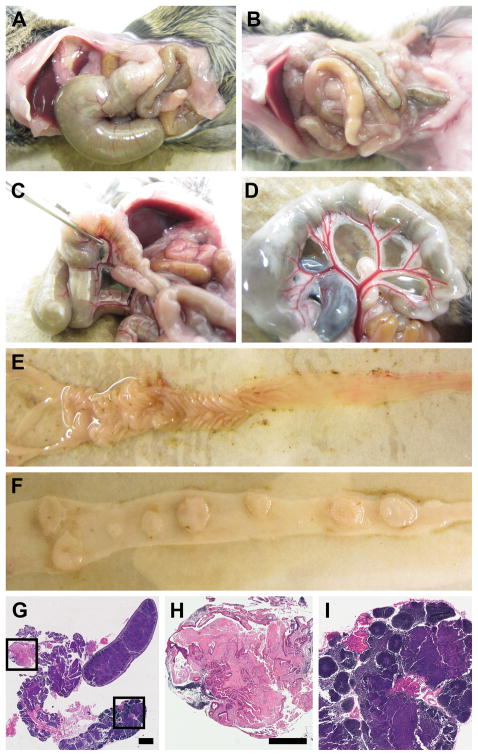Figure 1.
FC13K1ApcMin/+ mice become moribund by 52 days of age on average due obstructive enteropathy or anemia. At necropsy, large proximal colon cancers result in distention of the cecum and small intestine (a) compared to control (b). These tumors are associated with enlarged mesenteric adenopathy (c). In addition, an impressive vascular supply is noted supplying tumors in the colon (c) and distal small intestine (d). The colon was removed and split lengthwise demonstrating a large flat proximal colon cancer and other smaller tumors in the colon (e). The distal small intestine was also resected and split lengthwise revealing multiple large tumors. The mesentery was also examined closely following removal of the colon and small intestine. Hyperplasia of the lymphatic tissue was seen in all mice (c and g). In some mice tumor deposits were seen in the mesenteric adipose tissue (g and h) or within the lymphatic tissue (g and i). Size bars: g = 2mm; h–i = 1mm. h and i are enlargements of the boxes in g.

